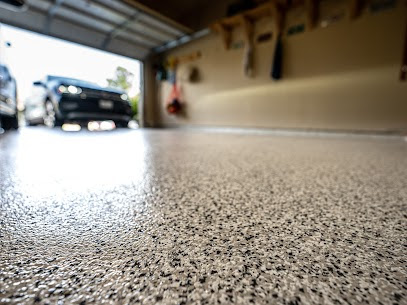Homeowners are continuously in search of upgrades that provide long-term value and enhance beauty. The one that is underrated and very popular is called Garage FloorEpoxy. Although an epoxy flooring project may be viewed at an initial observation as cosmetic work, the project has several functional merits.
However, is
it even worth the price and effort? The following practical analysis is the
appearance of investment to the homeowner.
Adds
Visual Appeal and Cleanliness
With an
epoxy-lined garage floor, the entire appearance of the location is noticeably
improved. It makes dull, stained concrete a shiny and finished surface. The
fine finish is used to ensure that the garage looks cleaner and well-trimmed.
Light is also reflected through epoxy, which can lighten the space without
additional lighting.
This is
especially worth improving, considering that you use your garage not only as a
parking place but also to conduct a gym, work, or store things.
Protects
Your Floor from Damage
Automotive
garages are under continuous abuse. Many items can be dropped on or spilt on
the floor, such as car tires, oil spills, falling tools, etc. The floor is also
exposed to varying temperatures. Epoxy serves as the protective coat that
covers concrete against the following threats.
There are
more advantages than just the looks. When well installed, epoxy does not cause
cracking on the surface, nor does it attack the surface with chemicals, having a
longer life span on your garage.
Standard
Epoxy Features to Look For
When
purchasing a kit or contracting an owner to ensure that you are getting your
worth, consider the following features:
- Higher solids concentration for
greater protection: Thick coatings are more durable and have resistance against wear in
the long term.
- UV resistant: This is to prevent sculling; the
color and shine remain with the sun.
- Safety Slip resist adding
Slowing down additives: It helps to avoid slips, especially when it is wet and
when people are in a rush.
- Simple application: DIY projects will be more
straightforward and user-friendly.
- Long-life finishes Long-life
topcoats: Super
adds no scratch, stain, and wear protection.
These
properties increase the longevity and quality of the epoxy coating.
What
Homeowners Love About Epoxy
Many
homeowners who have used epoxy affirm that if they had to do it again, they
would not hesitate to have one! There is much more to it than it appears.
This is why GarageFloor Epoxy is a favorite of the DIYer and professional alike:
- Durable and long-lasting
- Resistant to oil stains, water,
and chemicals
- Easy to clean and maintain
- Adds resale value to the home
- It offers a non-slip texture for
safety.
These
functional benefits are helpful as well as decorative investments.
Signs
You’re Ready for Epoxy
In case the
floor of your garage is stained, instead of cracked or challenging to clean,
epoxy presents the perfect solution. It can also serve as a great option when
you want to sell or remodel your home. In showings and appraisals, a new coated
floor may bring significant changes.
Conclusion



